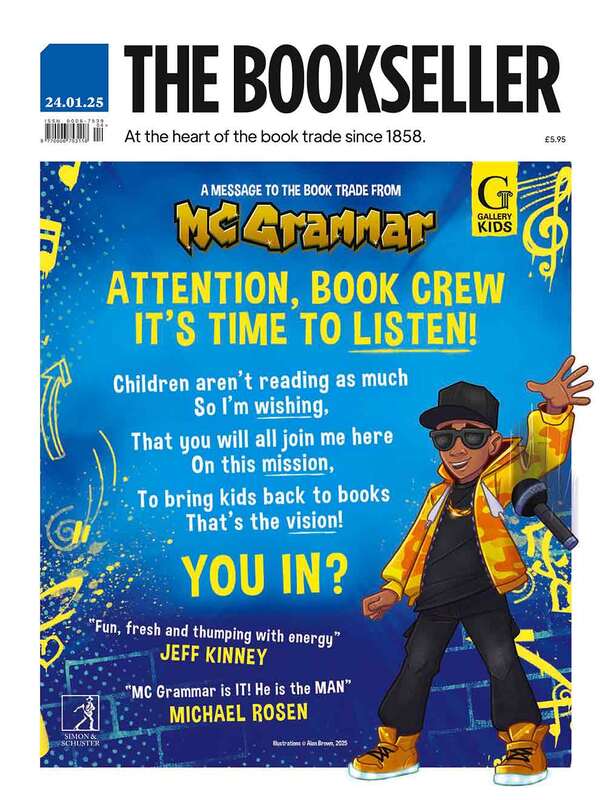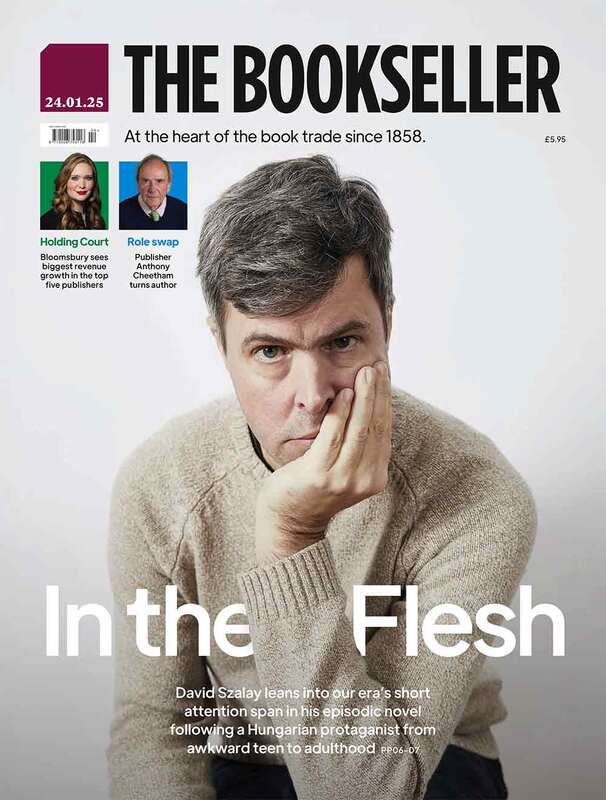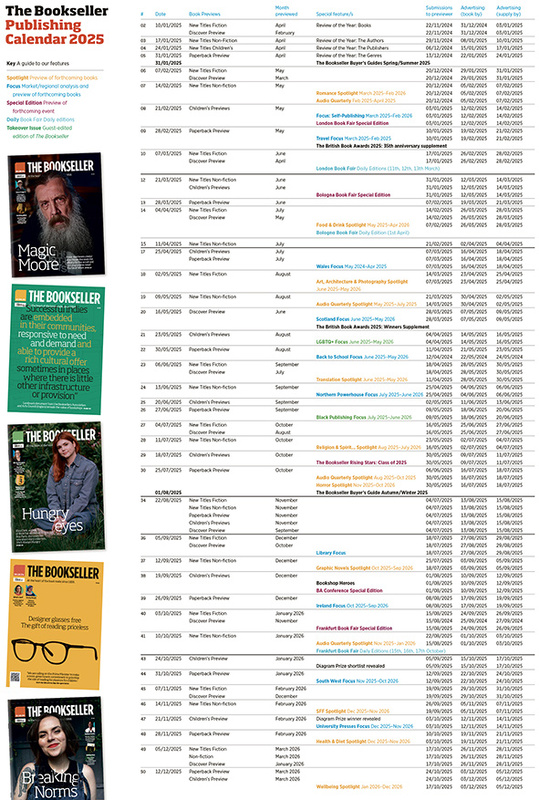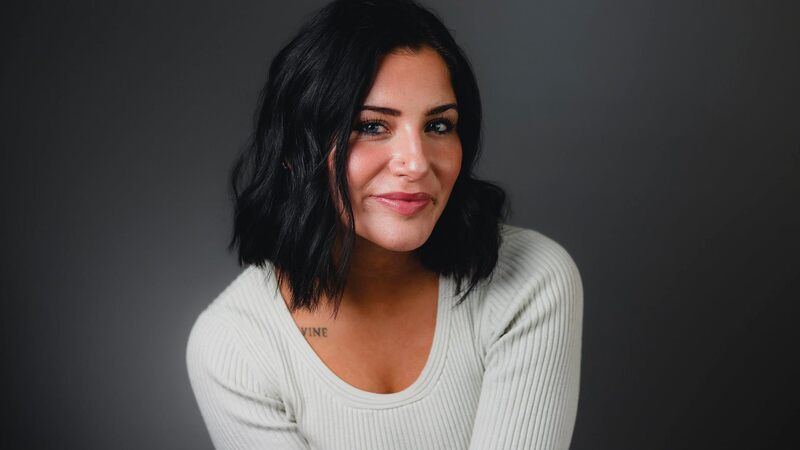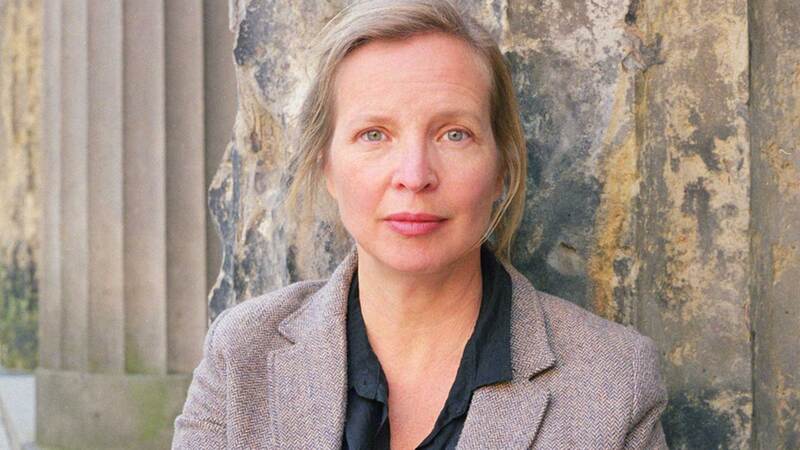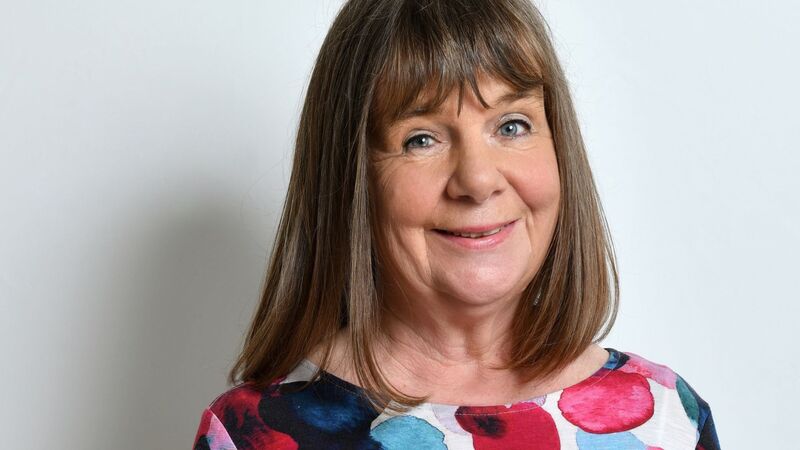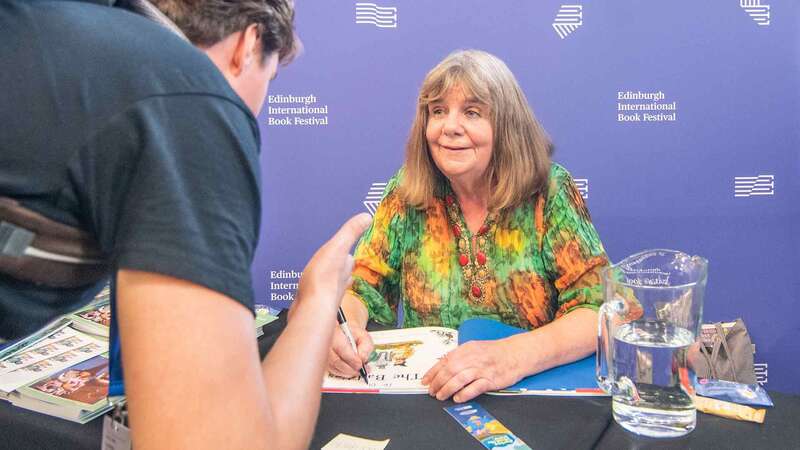You are viewing your 1 free article this month. Login to read more articles.
McCaughrean and Smith on their Carnegie and Kate Greenaway wins
Isolation beside the sea is a theme of the winning titles of both the CILIP Carnegie Medal and the Kate Greenaway Medal this year, with the awards’ recipients announced by the judging committee earlier this week (18th June).
The judging panel bestowed the 2018 Carnegie Medal on UK author Geraldine McCaughrean for Where the World Ends (Usborne), about a group of boys who are marooned on a sea stack in Scotland for nine months, and the Kate Greenaway on Canadian illustrator Sydney Smith, for his artwork in Joanne Schwartz’s Town is by the Sea (Walker Books), about a boy growing up in a coal-mining town by the sea.
Where the World Ends is based on the true story of a group of 18th-century boys from St Kilda, who were dropped on a sea stack to hunt birds. The boat never returned to pick them up so the group was marooned for nine months, living “entirely on birds and water”. All the boys survived and returned to find their entire community, bar one person, had been wiped out by smallpox.
McCaughrean said she was “thrilled” to win the Carnegie for a second time. She first won in 1988 for A Pack of Lies (OUP), and told The Bookseller: “This is my second Carnegie in 30 years...I have always wanted to win again. I’ve been shortlisted eight times! When I won the first time, it was my ticket to go on writing.”
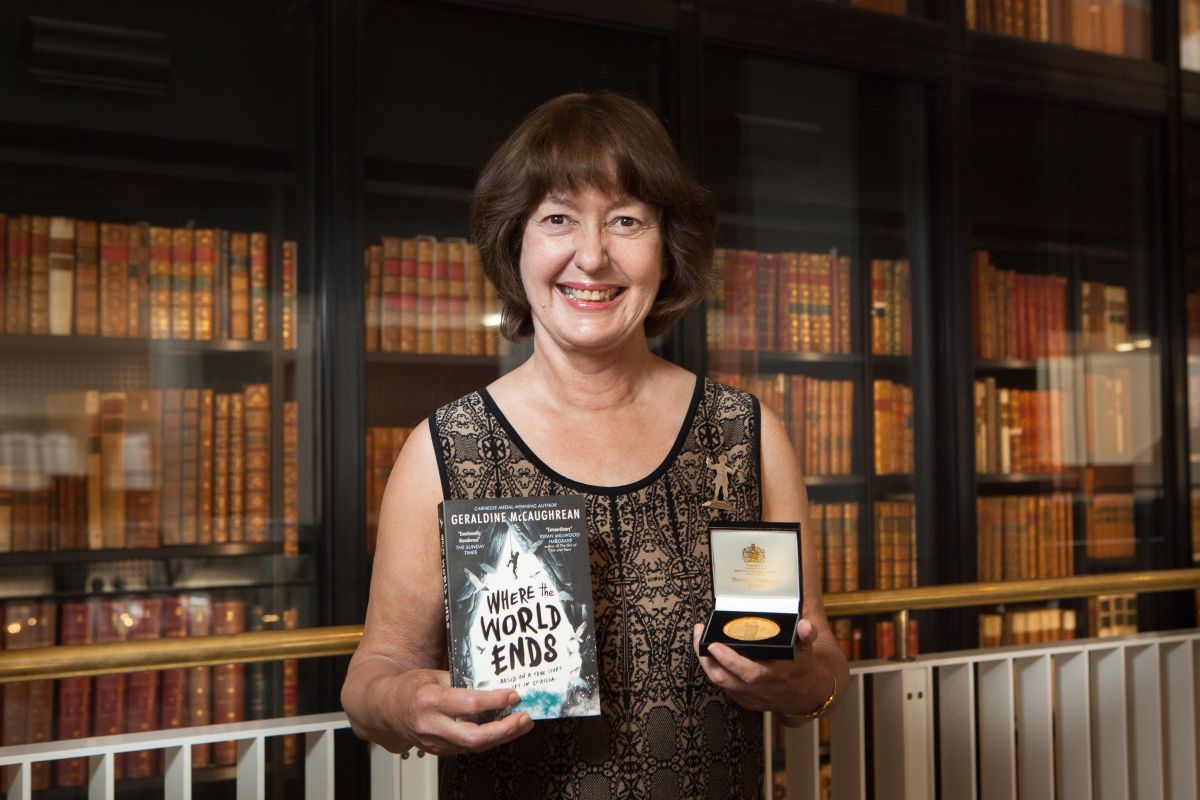
CILIP Carnegie Medal winner Geraldine McCaughren (© Katarina Jarvinen)
The only account of what happened to the boys in real life is a two-line record from a diary of an 18th-century missionary, but McCaughrean was intrigued by what they would have thought when no one came to pick them up. “I liked the idea that they thought the world had come to an end and they were just waiting for the angels to come,” she said.
Smith, who won the Kate Greenaway for the first time, said he was inspired to illustrate Town is by the Sea because it is based in his home province of Nova Scotia in Canada. The characters in the story are, like those in McCaughrean’s novel, isolated in many ways, although they are so by geography, not a disaster. The project enabled Smith to reconnect with his rural upbringing. “I now live in Toronto, where [Canada's] publishing industry is based, but when my editor suggested this book to me I immediately had to say yes,” he told The Bookseller. “I immediately had to reconnect. It was my chance to represent the people from my province.”
Both Smith and McCaughrean said they worked as hard on their winning titles as they had on any other they had undertaken; Smith did “four or five” drafts for each scene, often working on two different scenes at a time. He took his sketchbook with him everywhere he went—it was even to hand when he was on the treadmill at the gym—and would jot down ideas as soon as they came into his head.
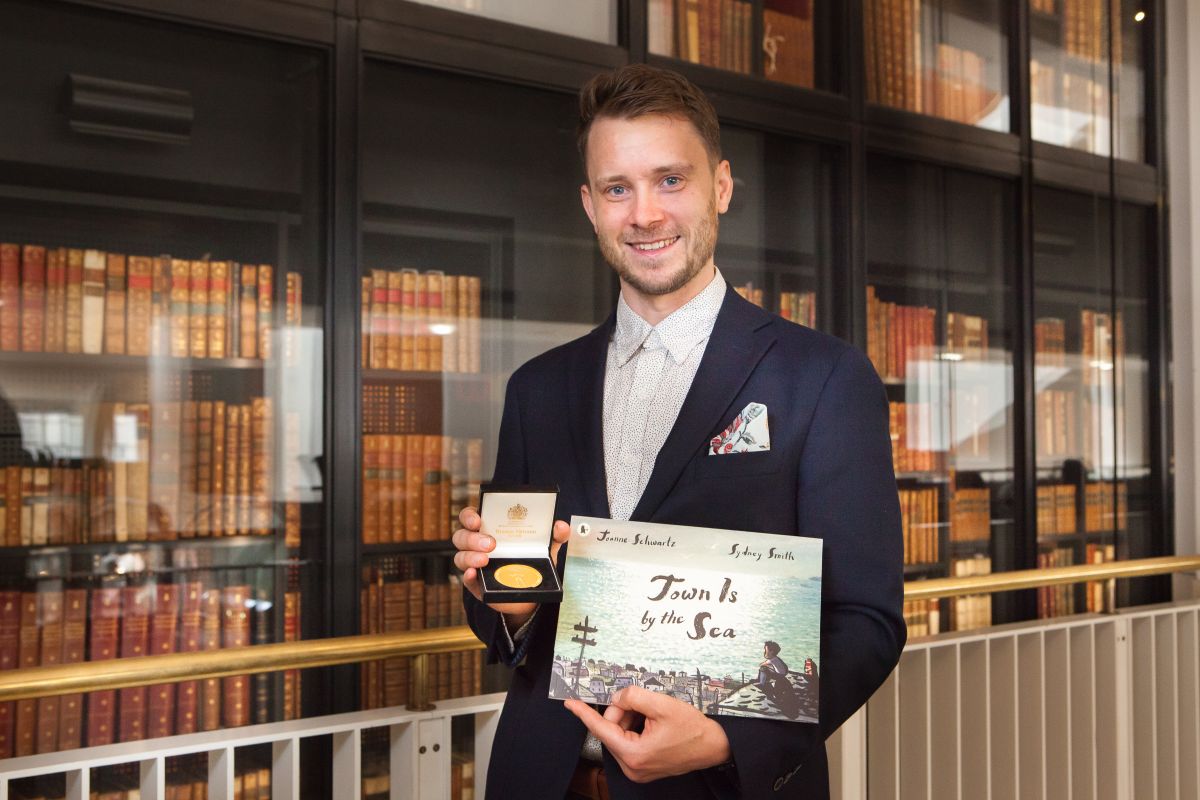
CILIP Kate Greenaway Medal winner Sydney Smith (© Katarina Jarvinen)
The artwork was done in ink and watercolour, with minimal digital editing, and the only note Smith’s publisher gave him was “no red hair”, as it is a visual stereotype for the region, he said. “I spent a year on the book and worked right up until the moment it went into print. I wanted someone from my home town to read it and know that I knew exactly what it was like to be there.”
McCaughrean spent a year working on Where the World Ends and she said that, unlike earlier in her career, she can no longer start on page one and write straight through to the end. Now, she has to spend time going in and “adding bits in to make the story exciting. It also got ‘grimmer’ and older, because it came to me little by little how grim their lives were, and the sheer purgatory of not knowing why they had been abandoned must have been awful.
“My editor Anne Finnis, who is absolutely brilliant, struggled sometimes to believe what I was writing. It does read implausibly. How could they possibly survive on a rock?” Her research was “extensive”, ranging from how people lived to what they ate, and why the group didn’t eat fish even though they were surrounded by the sea. “Children said they liked the boys’ different characters, and how they were different from each other,” she said. “They liked being scared and the wildlife.”
Readers “are still very articulate about books” and kids have changed less over the years than publishers, she added. “Publishers are more fastidious now about making books easy to read, which gets on my wick. It’s hard if you are partial to mellifluous sentences. I have books rejected because the language is too complex, but children love words.”

